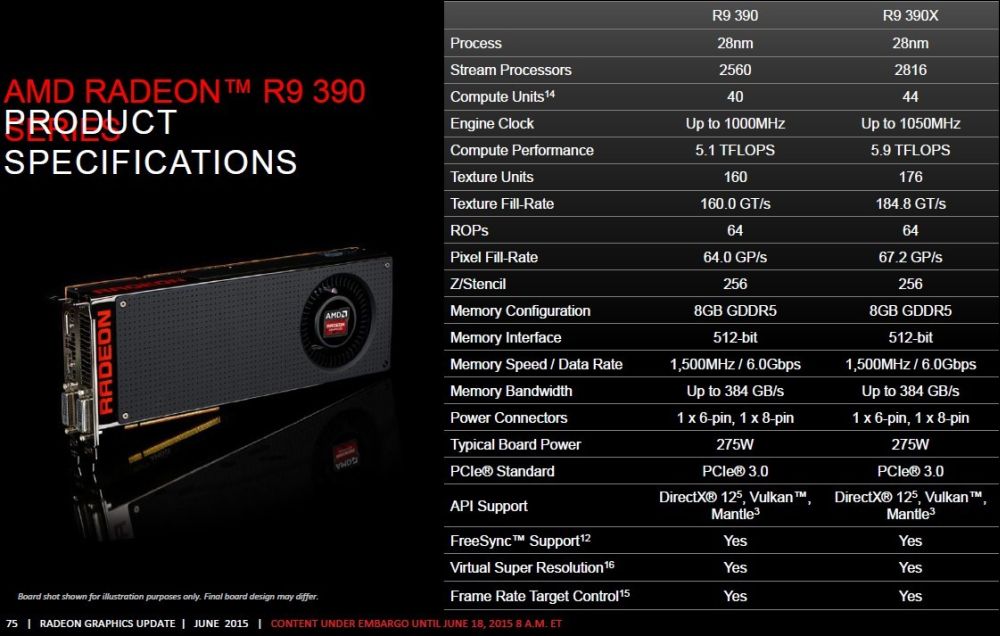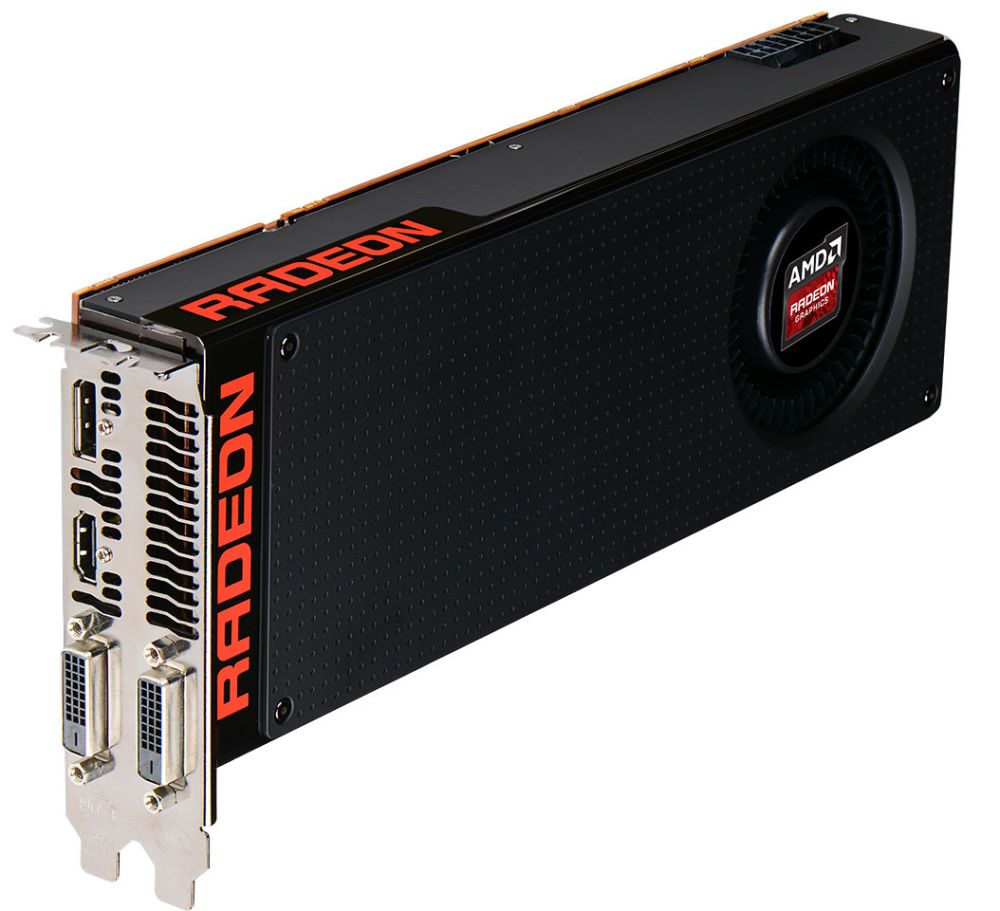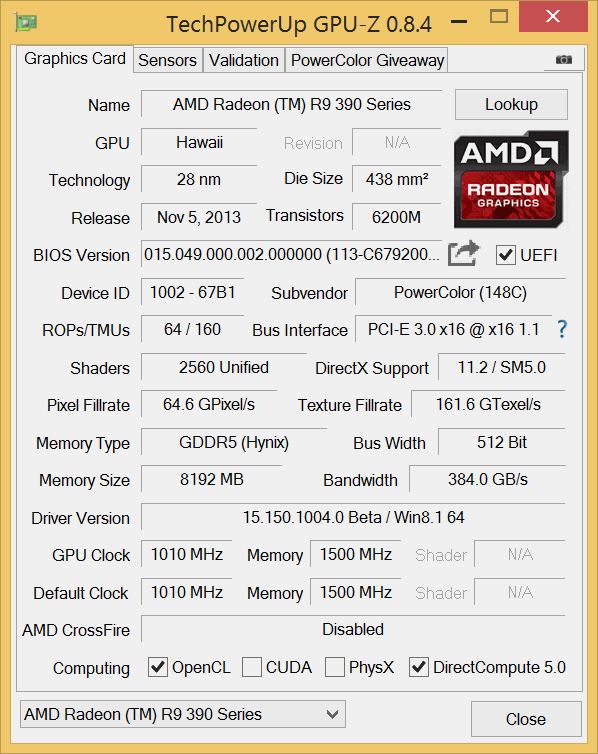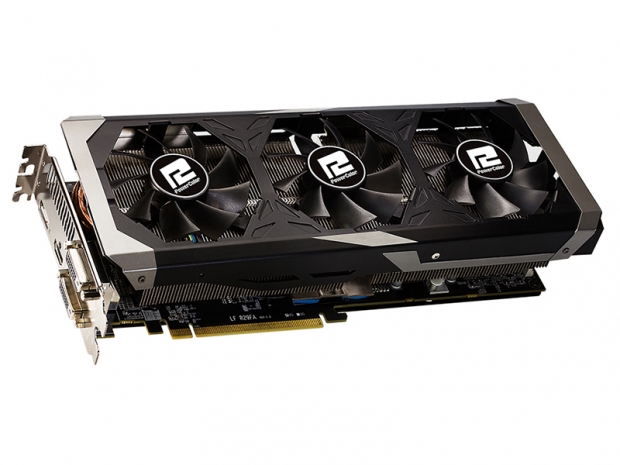Index
Review: Silent and faster than R9 290X
The PowerColor PCS+ R9 390 provides a great gaming performance at 1440p. It comes with 8GB of GDDR5 memory and quiet custom cooler with three fans and a backplate.
Today we’ll take a closer look at the R9 390 card from PowerColor. The full name of the card is PowerColor PCS+ R9 390 8GB GDDR5, with the part number AAXR9 390 8GBD5-PPDHE. It uses nicely designed, but oversized 2.5 slots cooler and a custom PCB.
Actually, a huge cooler is a must have in this case because the R9 390 is closely related to the R9 290, which is based on Hawaii GPU, the second fastest single GPU in the previous generation of AMD graphics cards. The Hawaii GPU gets really hot, but it provides a good gaming experience at 1080p+ resolutions.
The recently introduced R7 300 and R9 300 series graphics cards are not based on new GPUs, instead AMD is using rebranded older GPUs. Only the flagship Fury card comes with an all new GPU. The new lineup is depicted in the image below and it consist of Radeon R7 300 graphics card which should hold the entry-level, the Radeon R9 380 for the mid-range market segment, the Radeon R9 390/R9 390X for the AMD's higher-end lineup, and the flagship Fury a.k.a. Fiji lineup.

The AMD Radeon R9 390 graphics card is based on the Grenada GPU, previously known as Hawaii GPU, used in R9 290 lineup. It uses AMD's Graphics Core Next 1.1 architecture and to differentiate it from the older GPU, Grenada comes with a slight overclock for the GPU. Compared to the 947MHz on the R9 290, the R9 390 works at 1000MHz for the GPU.
The Radeon R9 390 (called the Grenada Pro GPU) packs 2560 Stream Processors in 40 Compute Units, 160 Texture Units and 64 ROPs.
The faster Radeon R9 390X packs 2816 Stream Processors, 176 Texture Units and 64 ROPs, just like the Radeon R9 290X. The GPU on the R9 390X got bumped up to up to 1050MHz from 1000MHz on the R9 290X.
The rebranded Radeon R9 290 also got a higher memory clocks and more memory. There is now 8GB of GDDR5 memory clocked at 6GHz, compared to 4GB of GDDR5 memory clocked at 5GHz on the R9 290 series. The memory still uses a 512-bit memory interface, delivering memory bandwidth of up to 384 GB/s.
The TDP on both R9 390 and R9 390X graphics cards is set at 275W and they both need 6+8-pin PCI-Express power connectors.


The PowerColor PCS+ 390 8GB got a very small GPU overclock, which is only 10MHz over the reference clock. This comes as surprise since the PCS+ R9 290 was clocked at 1040MHz for the GPU. Probably the memory overclock of +150MHz (600MHz effective GDDR5) is to blame for lower GPU overclock. In some cases in combination with the memory overclock it is necessary to lover GPU overclock to get better overall performance or stability. The memory is left at reference clocks as confirmed by GPUZ, shown in the screenshot below. Don’t be confused here, it is AMD who raised memory clock on the R9 390 card, not PowerColor.

The PCS+ 390 8GB cooler was originally designed to meet the demands of the flagship R9 290X and afterwards it was used on the R9 290. With minor changes it is in action again, on the R9 390. We expect it to do a great job cooling the PCS+ R9 390.

The PCS+ R9 390 8GB comes with a nice backplate too.
Below is the image of the PCS+ 290 4GB, and as you can see there is slight difference in the looks of the front shroud.

The current PowerColor’s R9 390 lineup includes only the PCS+ R9 390. The R9 290 lineup also includes R9 290 TurboDuo, a slower version clocked at 975MHz for the GPU. However due to the increased reference GPU clock from 947MHz to 1000MHz for the R9 390, we are not sure that the TurboDuo cooler will be used this time due to the higher thermal requirements of the new GPU. However, it is now used on the PCS+ R9 380, which is based on the less powerful Tonga GPU (also used on the R9 285).
Specifications:
- Graphics Engine Radeon R9 390
- Video Memory 8GB GDDR5
- Engine Clock 1010MHz
- Memory Clock 1500MHz x4 (6.0 Gbps)
- Memory Interface 512bit
- DirectX Support 12
- Bus Standard PCIE 3.0
- Standard Display Connectors DL DVI-D/ DL DVI-D/ HDMI/ DisplayPort
- CrossFireX Technology Support
- ATI Stream Technology Support
- ATI Eyefinity Technology Support
- Board Dimensions 305mm x 130mm x 55mm
- Minimum System Power requirement 750W
- Extension Power Connectors: one 6-Pin and one 8-Pin PCI Express power connectors

